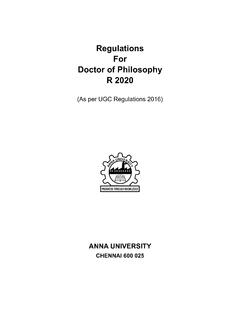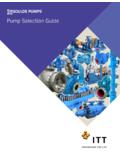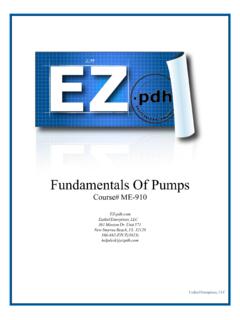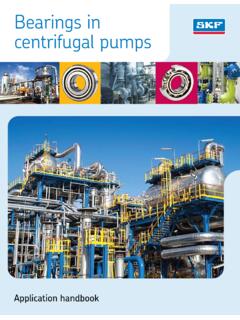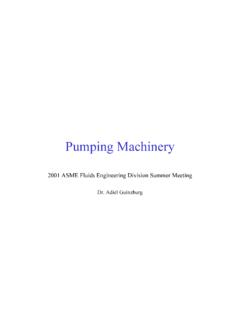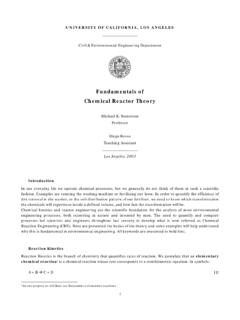Transcription of CENTRE FOR RESEARCH Anna University, Chennai - 600 025 …
1 CENTRE FOR RESEARCH . Anna University, Chennai - 600 025. Admission - Written Test Syllabus (The syllabus of the Written Test consists 50% of RESEARCH methodology (Part I). and 50% of core subject (Part II) selected by the candidate). Part - I. Syllabus for RESEARCH Methodology Admission Written Test (Common for all Specializations). Meaning of RESEARCH : Objectives of RESEARCH , Types of RESEARCH , RESEARCH Process, Problem Statement, RESEARCH Design, Approaches to RESEARCH -Quantitative, Qualitative Approach, Exploratory, Confirmatory RESEARCH , Experimental and Theoretical RESEARCH .
2 Problem Formulation: Conducting Literature Review, Information Sources (Books, monographs, reviews, blogs, etc.), Information Retrieval, Role of libraries in Information Retrieval, Tools for identifying literature (digital resources and print media), Indexing and abstracting services, Citation indexes, Summarising the Review, Critical Review, Identifying RESEARCH Gap, Conceptualising and Hypothesising the RESEARCH gap. RESEARCH Design: Experimental / Simulation/ Theoretical /Empirical RESEARCH , Cause effect relationship, Development of Hypothesis, Measurement Systems Analysis, Validity and Reliability, Statistical Design of Experiments, Field Experiments, Data/Variable Types &.
3 Classification, Data collection - Methods and Tools. Data Analysis and Interpretation: Sampling, Sampling Error, Statistical Methods/Tools - Measures of Central Tendency and Variation, Test of Hypothesis- z test, t test, F test, ANOVA, Chi square, correlation and regression analysis, Error Estimation. Writing RESEARCH Articles and Thesis: Data Presentation- Types of tables and illustrations, Guidelines for writing the abstract, introduction, methodology, results and discussion, conclusion sections of a manuscript. References Styles and methods, Citation and listing system of documents.
4 Plagiarism. Ethical considerations in RESEARCH . 1. Part - II. Syllabus for Admission - Written Test (Choose one core subject code related to your specialization). Faculty of Civil Engineering PCE1001 Transportation Engineering UNIT - I Traffic Engineering and Management Traffic Characteristics: Urban Road user characteristics- Vehicle and Traffic Stream Characteristics. Traffic Studies: Volume, speed, travel time and delay, O-D, Accident and parking studies LOS concept, factors affecting capacity and LOS, capacity of different types of facilities. Traffic Control and Management: Signs, markings, islands and signals; At-grade and grade separated Intersections; Rotaries; Basic principles of intersection signalization; Signal Regulation, Traffic Systems Management and Travel Demand Management - Congestion Management, Traffic Calming and Pricing-Design of Cycle Tracks, Pedestrian Facilities and parking design.
5 Intersection Design and Analysis: Design of Intersection At grade intersection Uncontrolled, Channelisation, Rotary, Traffic Signal Control, Signal Co- ordination, Grade Separated Intersection - Types Design and Analysis. Traffic Flow Fundamentals and Characteristics: Flow Parameters - Approaches to Traffic Flow - Spacing, Gap and Headway Characteristics Macroscopic and Microscopic Traffic Flow Models- Vehicular Stream Models- Queuing Theory-Delay at Intersections-Concepts and application of Intelligent Transportation Systems (ITS) -Traffic Enforcement. UNIE - II Urban and Transportation Planning Urban Planning : Classification of urban settlements, Urban infrastructure developmentZoning Regulation, Layout and Building and social concepts in urban and regional planning-Financing of Urban Developments projects and and Country planning act.
6 Urban Transportation Planning Process:systems approach to planning process, problem definition, solution generation, solution analysis, evaluation and choice. Environmental and social Impat Assesment of Transport Projects. Transportation Systems Planning:Stages in Transportation Planning-TravelForecasting Process-Modal split models Mode choice 2. behavior-Traffic assignment and methods-Land Use Transport Transport System- Bus Transit Planning And Scheduling-Rail Transit Terminals And Performance Evaluation- Policies and Strategies for Mass Transport. Transport Economics: Principles of Economic Analysis-Factors affecting vehicle operating cost-Transport demand and supply concepts-Public and Private Transport Financing and Pricing.
7 Transportation Surveys: Transportation surveys definition of study area, zoning, home-interview survey, cordon-line and screen line surveys, traffic surveys, inventory of transport facilities, inventory of land-use and economic activities. UNIT - III Highway Design Highway alignment: Horizontal: Theoretical, general and design considerations; Super elevation; Simple, compound, reverse and transition curves; Guidelines for design; Vertical: Terrain; Grades; Climbing lanes; General considerations in vertical curves; Crest and sag vertical curves; Coordination of horizontal and vertical curves; Guidelines for design of hill roads.
8 Design controls and criteria: Vehicle, driver and traffic characteristics and their influence on geometric design of highways; Access control -At grade intersection conflict points, channelization. Cross section elements: Considerations with regard to cross section elements such as, carriageway width, right-of-way, camber, shoulders, kerbs, footpaths, drainage elements, traffic barriers and medians; Frontage roads- Pedestrian crossings- Bicycle facilities- Bus bays. Sight distances: Stopping, decision, overtaking and intermediate sight distances- Sight distances on horizontal curves and at intersections- Applications of sight distances for various situations UNIT - IV Pavement Materials, Design and Evaluation Pavement Materials and Construction: subgrade soils - aggregates- Bituminous binders and modified binders- Bituminous paving mixtures Mix Design, Material testing and evaluation- 3.
9 Construction of gravel and stabilized bases-Cement concrete for highway construction- Types of pavements-Stresses in bituminous pavements and concrete pavements- Various design methods for Flexible and rigid pavements. Pavement Evaluation and Maintenance: Failures in pavements- evaluation and equipments-structural stability assessment of pavements- repair and maintenance-overlays-Pavement serviceability rating and index. 3. PCE1002 Computer methods and applications in Structural Engineering /. Structural Engineering UNIT - I Reinforced Cement Concrete Structures and Prestressed Concrete Structures Concrete structures Design of reinforced concrete elements, flat slabs and yield line theory based design, design of water tanks, retaining walls, inelastic behavior of concrete structures, ductile detailing.
10 Design of long and short span bridges, analysis and design of tall buildings, stability of tall buildings, wind effects on structures. Prestressed concrete -Design of flexural members-continuous and cantilever beams, design of tension and compression members, composite members ,losses of prestress, design of prestressed bridges, chimneys, poles, sleepers. UNIT - II Advanced Steel Structures Design of members subjected to combined forces - Design of connections - Riveted, Bolted and Welded - Analysis and design of industrial buildings - Sway and Non-sway frames - Plastic analysis of structures - Design of light gauge steel structures.
